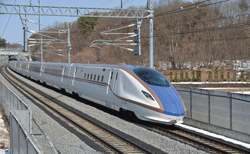
Japan promotes destinations with historic European charm and theme attractions to attract Asian MICE, in particular incentives. By Mimi Hudoyo
Japan is opening up destinations beyond the Golden Route, not only for leisure travel but also for MICE, especially the incentive market.
This strategy is part of the country’s efforts to reach 20 million arrivals by 2020.
Akira Ninagawa, executive director, Japan Convention Bureau (JCB), said: “Apart from academic conferences, our target is to develop incentive tours.”
While the Golden Route of Tokyo, Hakone and Kyoto remain the major destinations, Hokkaido, for example, which started to open up in recent years, is gaining popularity as a MICE destination among Asian travellers.
Ninagawa said JCB is identifying unique venues and cultural programmes to attract MICE programmes to the country.
Said Ninagawa: “Places like Tokyo National Museum, Nijo Castle in Kyoto and Atake-maru (Samurai ship cruising aroud Tokyo Bay) are unique venues we would like to introduce to international MICE visitors.”
One of the destinations which is opening up for MICE is Nagasaki Prefecture in North Kyushu.
Takako Sonoda, director, General and Internal Affairs Overseas Department, Promotion Section of Nagasaki Prefecture Convention and Tourism Association, said: “On the meeting and convention side, Sasebo City has a number of convention venues to offer.”
Arkas Sasebo, a multi-purpose centre, for example, can accommodate up to 2,000 people in the main hall plus has several conference and tea rooms.
In addition, Wins Sasebo and Huis Ten Bosch Utrecht Plaza are two convention facilities in the Huis Ten Bosch area.
Wins Sasebo has capacity for up to 1,800 people and a 300-inch giant screen, while Huis Ten Bosch Utrecht Plaza can accommodate up to 1,000 people.
Huis Ten Bosch itself is a picturesque village on the shore of Omura Bay. It was built to mimic a medieval Dutch town with brick houses, canals and flower gardens.
Western influences are found in many places in Nagasaki Prefecture because it was the only place open to visitors from Western Europe during Japan’s national isolation period from 1641 to 1859.
In line with JCB’s efforts to identify unique venues, Sonoda said Nagasaki has a number of such places.
Glover Residence in Glover Garden, for example, is Japan’s oldest wooden Western-style residence. It was the former home of Thomas Blake Glover, a Scottish merchant who played a role in the modernisation of Japan in shipbuilding, coal mining and other fields.
Sonoda said: “The beautiful garden has statues related to the Madam Butterfly opera, which was set in Nagasaki. It also offers a stunning view of the harbour.”
The garden has been nominated for UNESCO World Heritage status in 2015. “Incentive groups or corporate companies can organise theme events here,” she noted.
Dejima Museum, located on a fan-shaped artificial island with a 400-year history of Dutch trade, is another unique venue, where meeting planners can organise theme parties related to the period.
Another unique venue is the Unzen Miyazaki Ryokan, an upmarket Japanese ryokan which has been in operation since 1929.
It has 98 rooms with a mix of Japanese traditional and modern Western bedrooms, and meeting rooms which can accommodate up to 300 delegates. Groups have a choice of Japanese tatami seating for group dinners, or Western-style meetings and banquets.

Unzen Miyazaki Ryokan is located near the famous Unzen Hot Spring and Unzen Jigoku Hell, about 90 minutes’ drive away from Nagasaki Airport.
Nagasaki has also attracted movie producers to film in the area, and can be considered for a movie-themed incentive tour.
Sunset in the Kujuku-Shima Islands, Sasebo City, for example, appeared in The Last Samurai (2003). The Wolverine (2013) starts with a scene of the bombing of Nagasaki Harbor during World War II. The actual images of the scene were created by composing real views of Nagasaki Harbor.
Sonoda added: “The Battleship Island of Hashima inspired the James Bond 007 Skyfall (2012) film producers for the lair of the villain (Raoul Silva).
“The island which in silhouette looks like a battleship, was featured as the model of the Dead City in the film, but the filming did not take place there.”
With China and South Korea being the closest destinations from Nagasaki, travellers from both countries contribute the bulk of the traffic for this prefecture.
“However, we are starting to tap the South-east Asian markets such as Singapore, Thailand, Malaysia and Indonesia,” she commented.
Nagasaki has direct flights from Shanghai and Seoul and is linked to other countries via Tokyo Haneda, Nagoya, Osaka (Itami, Kansai and Kobe Airports) and Okinawa.
Fukuoka is the main airport in North Kyushu with international flights from the Netherlands, Singapore, the Philippines and Hawaii. From Fukuoka, travellers can either transfer by bus or take the JR Train to Nagasaki, about one hour and 50 minutes away.
For those looking for experiential tourism, Ajimu in Oita Prefecture in the north-eastern part of North Kyushu, is a suitable choice. Oita is accessible with domestic flights from Tokyo, Osaka and Haneda. Direct international flights are available from Seoul.
Ajimu is known for its wineries and vineyards, and travellers can visit the wineries to learn about the production process and taste some of the products.
Ajimu is also the birthplace of green tourism in Japan, dating back to 1996. It was wine-grower Seiichi Miyata who had the idea of creating additional income for the farmers in the area through agrotourism or green tourism.
He developed the concept through a self-comparative study with a village near Freiburg in southwest Germany, which is famous for its vineyard retreat since the 1960s.
“In the beginning, it was not easy to convince the people here to go into the business.
“Many houses around Ajimu are a century old or more, inherited from generations past.
“It was not easy to convince the owners to maintain their original structure in the beginning. Only when tourists started to come and appreciate the heritage houses, many start upgrading their houses but retaining the originality,” Sonoda said.
Many houses have introduced air-conditioning and also provide western-style toilets, for example.
“There are 70 houses in Ajimu, which are open for green tourism, with a total capacity of up to 250 people today,” she added.
So far, many of the guests are students on study tours and families, but working with local DMCs, tailormade programmes can be arranged for incentive groups.
Group members can gather at the community hall for briefings and are divided into smaller ones.
The hosts will then meet the groups and take them to their houses to experience their daily activities.
The activities require a lot of interaction with the hosts, who mostly do not speak English.
Therefore, groups will need to have an interpreter if travellers do not speak Japanese.
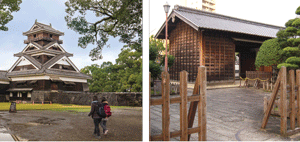
From left: Kumamoto Castle in Northern Kyushu;
a restored building at Dejima
Ideas
Three-day post-conference tour in North Kyushu
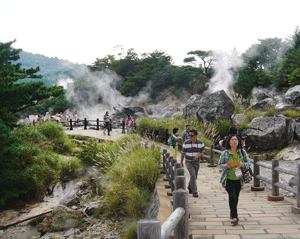
Day 1
Arrive at Nagasaki Airport at about noon and proceed to Chijiwa Kanko Center for lunch, then visit Unzen Jigoku (which means hell), one of Japan’s most famous hot spring resorts located about 90 minutes away from Nagasaki City.
Drive to Nagasaki City and visit Dejima, an artificial island with a 400-year history of Dutch trade. Built in the shape of a fan with an area of about 13,000m2, it was built during the Edo Period in order to accommodate Portuguese Christian missionaries and prevent the propagation of their religion. It also used to be the residential quarters of the Dutch, the only foreigners allowed to trade in Japan during the Sakoku (Isolation) Period, and a Dutch Trading House operated on the island.
Walk along the island flanked by old buildings – some 10 of them have been restored – and visit the Chief Factor’s Residence, the First Ship’s Captain’s Quarters, which have a mix of Japanese and European interiors, and the former stone warehouse which has now become the Archaeology Center, just to name a few.
Visitors can try on the kimono here. It usually takes half an hour to put on a kimono, but in this kimono shop, visitors can dress up in the traditional kimono in just three minutes. This fun and easy kimono-wearing experience starts from 500 yen (US$4.20) for half an hour’s rental. Dressing up in a kimono and taking a picture against a backdrop of Japan-meets-West buildings is becoming a popular activity for many visitors.
Prior to checking in at Crowne Plaza ANA Nagasaki, have a sumptuous set dinner at Hamakatsu with Nagasaki beef on the menu. Nagasaki beef won the 2012 Japanese Beef Olympics.
Day 2
After breakfast in the hotel, drive to Peace Park and Atomic Bomb Museum, then head on to Nagasaki Museum of History and Culture, two museums that show the history, culture and tradition of Nagasaki.
The Nagasaki Atomic Bomb Museum presents the history of the devastating bombing on August 9, 1945 and the impact on the city, and the reconstruction up to the present day.
The Peace Park shows that despite the projection that no vegetation can grow on the soil for 75 years after the bombing, the park is full of plants and flowers and is covered with green grass.
Drive to Fukuoka, and on the way stop by at Imari Pottery in Arita, an area in Saga Prefecture, famous for its Arita-yaki porcelain pottery. Here, enjoy a fusion set lunch at the restaurant at Imari Pottery before heading to the workshop to see how artists decorate the pots and plates.
With prior bookings, groups can participate in painting pots.
After arriving in Fukuoka in the afternoon and checking in at Royal Park Hotel The Fukuoka, which is a 15-minute drive from the airport and a five-minute walk from Hakata train station, guests have time to visit Canal City Hakata shopping area, which is also a five-minute walk away from the hotel.
Canal City is a large shopping and entertainment complex with an artificial canal running through the middle of the five-storey complex.
End the day’s activities with a hot pot dinner at Hanamidori.
Day 3
In the morning, drive from Fukuoka to Ajimu in Oita Prefecture to visit the green tourism area. Participants are divided into small groups of four or five and each visits a family and participates in their daily activities. The half–day programme includes learning to make soba, harvesting rice in the field, fruit and vegetable-picking and enjoying the home-cooked lunch.
In the afternoon drive to Beppu, about an hour away from Ajimu, and check in at the 287-room Beppuwan Royal Hotel. Soak in the hotel’s onsen before going for dinner. The Japanese restaurant, tatami-style, is recommended. Put on the yukata, or casual kimono, for an immersive Japanese experience.
Itinerary based on a fam trip by Japan National Tourism Organization
Need to Know
Narita and Kansai airports kick off fast lane for business event travellers
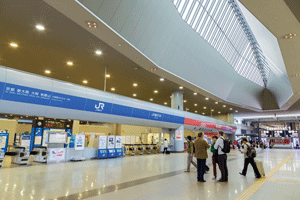
In a bid to attract more MICE groups, Japan will introduce fast lanes for VIPs and international travellers attending MICE events this year, starting with Narita International Airport and Kansai International Airport
The country will also allow “trusted” travellers, ie, frequent travellers to Japan who have been identified by the immigration stand control as having “low risk”, to use automated gates at immigration check points.
Akira Ninagawa, executive director, Japan Convention Bureau, said: “MICE is one of the six (grand) initiatives to create Japan as a tourism-oriented country, and facilitating travellers into the country is one of the measures we are going to provide.”
Preparations for the new facilitation are under way at press time.
Kyoto launches website for Muslim travellers
The city of Kyoto and the Kyoto Convention Bureau have launched a website for Muslim travellers at http://kyoto.travel/muslim/ under the supervision of the Kyoto Muslim Association.
The website, with English, Arabic, Turkish and Malay language options, provides information on the Japanese diet, how to find halal food in Kyoto and a guide to Muslim-friendly hotels, as well as finding qibla, the direction of the Kaaba, in Kyoto.
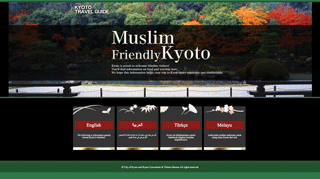
Explore Gion on a cycling tour
Most of Kyoto’s attractions are in a 10km2 area, and one of the best ways to visit these spots is to cycle, where visitors can access narrow alleys and explore local life and culture.
Visit Kyoto Cycling Tour Project’s (KCTP) website www.ktcp.net to arrange private cycling tours, and with the growing demand for cycling tourism among MICE groups, KCTP now has professional cycling tour planners who can arrange MICE group tours on bikes.
One of the popular tours available in the KCTP programme is the 12km Back Street Cycling Tour, which includes places such as Gion and the Imperial Palace, Higashi-Honganji Temple and Heian Shrine. The tour takes three hours.
Osaka Marriott offers rooms with views
Osaka Marriott Miyako Hotel in Abeno Harukas, which opened in March last year, occupies 19 floors of Abeno Harukas Tower, the tallest building in Japan.
The hotel is the fourth Marriott property in Japan. Its 360 guestrooms occupy the 38th to 55th floors and, it goes without saying, offer stunning views of Osaka.
The restaurant, located on the 57th floor, houses an extraordinary collection of liquors from all over the world. It features multinational dining menus.
With seven meeting rooms – the biggest capable of accommodating 160 people – Osaka Marriott is going after leisure and business travellers, and MICE groups.
Guests have easy access to Kansai International Airport in 30 minutes by the airport express train called Express Haruka, as well as multiple local train services to major landmarks in Osaka.
Abeno Harukas Tower is a new 984-feet tall skyscraper with 60 floors of dining, shopping, art and business.
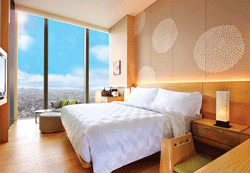
Enjoy Tokyo on a traditional Japanese houseboat cruise
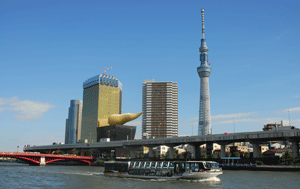
One of the ways to enjoy Tokyo by night is to take a unique group dinner cruise on a yakatabune, a traditional Japanese houseboat. MICE groups can charter the boat, whose capacity ranges from 20 pax to 100 pax, or share with other groups.
With Japanese tatami-style seating, travellers enjoy traditional Japanese cuisine such as sashimi-funamori (assorted slices of raw seafood), tempura, chirashi sushi, Japanese noodles and Japanese drinks ranging from beer, shochu sake, to green tea and soft drinks.
The boat cruises on the Sumida River and passengers enjoy views such as the Tokyo Skytree, the Rainbow Bridge and other Tokyo landmarks.
The Yakatabune Tokyo Association has 29 member companies with a total 108 yakatabune cruisers which can accommodate up to 6,000 guests.
Get cash in a flash any time of day
Travellers in need of Japanese yen late at night can turn to the more than 20,000 ATM machines at 7-Eleven stores in Japan.
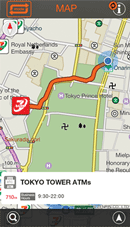 Operated by Seven Bank, travellers can withdraw cash any time of day, and apart from the stores which are open 24 hours, the ATMs are also available in malls, airports, train stations and other public areas.
Operated by Seven Bank, travellers can withdraw cash any time of day, and apart from the stores which are open 24 hours, the ATMs are also available in malls, airports, train stations and other public areas.
The ATM machine has instructions in English, Chinese, Korean and Portuguese. Information on their locations are available at http://www.sevenbank.co.jp/english/personal/atm/app/.
Travellers can download the Japan ATM Navigation mobile application which provides the user with a route from his current location to the closest Seven Bank ATM.
Experience authentic geisha tradition
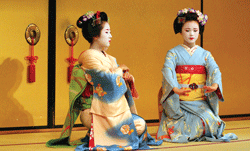 Kyoto is the home of geisha tradition, and the entertainers are called geiko and maiko.
Kyoto is the home of geisha tradition, and the entertainers are called geiko and maiko.
WaRaiDo Guide Network arranges private and authentic geisha parties with dinner for small incentive groups, including a private geisha party in a tea house not usually open to the public, accompanied by a geisha specialising in a musical instrument.
Tokyo-Kanazawa fast connection
A new Hokuriku Shinkansen line will be launched on March 14 between Tokyo and Kanazawa with 12 cars, including Gran Class, Japan Rail’s first class.
The Kagayaki super-fast train category takes passengers between two destinations in two-and-a-half hours, or more than an hour faster than the existing connection.
Kanazawa is in Ishikawa Prefecture, a destination popular for its hot spring resorts. The new service will give incentive groups easy access to the onsens.
